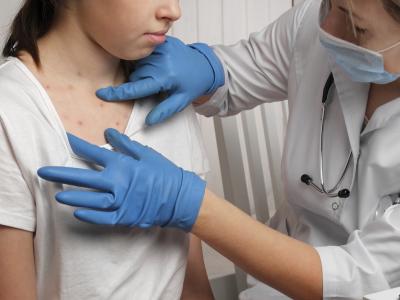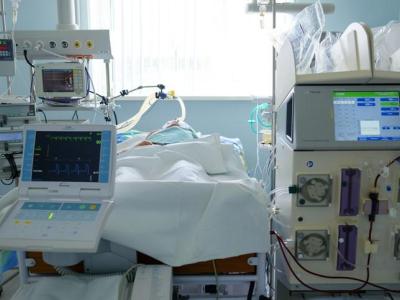Fewer antibiotics for non-COVID patients with fever, respiratory symptoms
Researchers at a hospital in China found an 8.3% decline in antibiotic use among patients with non-COVID fever and respiratory symptoms during the pandemic, likely because of heightened awareness of viral pathogens, according to a study published late last week in the Journal of Infection.
The retrospective study of 4,589 patients with fever and respiratory symptoms treated in the outpatient service at a hospital in Shanghai compared antibiotic use in the 2,617 patients treated in the pre-pandemic period (May 2019 to October 2019) with 1,972 treated in the peri-pandemic period (May 2021 to October 2021). The researchers hypothesized that there might be reduced antibiotic use under China's "dynamic zero-COVID policy," in which physicians were recommended to perform SARS-CoV-2 PCR tests, chest computed tomography (CT) scans, and C-reactive protein (CPR) and complete blood count (CBC) tests on all patients who had fever and respiratory symptoms.
The study found that rates of chest CT scans (45.3% vs 4.1%), CPR (60.3% vs 0.2%), and CBC (89.4% vs 63.5%) tests were higher in the peri-pandemic period than in the pre-pandemic period, and the rate of antibiotic use was lower (67% vs 73.1%). Receipt of combination antibiotics (11.5% vs 24.3%) and intravenous antibiotics (37.8% vs 52%) was also lower.
But multivariable logistic regression analysis found that neither CT scans (odds ratio [OR], 1.01; 95% confidence interval [CI], 0.83 to 1.22) nor CRP (OR, 0.93; 95% CI, 0.78 to 1.11) tests were associated with the decrease in antibiotic use. Only treatment during the peri-pandemic period (OR, 0.76; 95% CI, 0.64 to 0.92) was associated with decreased antibiotic use.
"Therefore, reducing antibiotic use in the peri-pandemic cohort might be primarily explained as the increased awareness of viral pathogens through the education of COVID-19," the study authors wrote. "In conclusion, from the perspective of antimicrobial stewardship, only adding CRP test and chest CT scan on fever patients with respiratory symptoms cannot reduce the rate of antibiotic use in outpatient settings in mainland China."
Mar 18 J Infect study
Iowa, Delaware, Kansas report more high-path avian flu outbreaks
Three states reported more highly pathogenic avian flu outbreaks in poultry, including Iowa, where the virus struck a layer farm housing 5.3 million birds.
Iowa agriculture officials reported two more outbreaks in poultry, raising the state's total to five, according to separate announcement from the Iowa Department of Agriculture and Land Stewardship (IDALS). One involved a massive layer farm in Buena Vista County, which had reported an outbreak at a turkey farm earlier this month. The county is in the northwestern part of the state. The other outbreak occurred in a backyard flock in Warren County, which is just south of Des Moines.
The US Department of Agriculture (USDA) also noted outbreaks in two other states that reported earlier events in poultry settings. Delaware reported its third outbreak, which affected a commercial broiler farm in Kent County near Dover that houses 156,800 birds. Also, Kansas reported its second outbreak, again in a backyard flock. The location in Sedgwick County, which includes Wichita, has six birds.
The outbreaks involve the Eurasian H5N1 strain that has turned up on farms in a number of world regions. Outbreaks in US poultry, which began following detections of wild birds in the middle of January, have led to the loss of roughly 9.5 million chickens and turkeys.
Mar 18 IADLS statement on Buena Vista outbreak
Mar 20 IADLS statement on Warren County outbreak
USDA Animal and Plant Health Inspection Service poultry outbreak page
In international developments, Romania reported a new H5N1 event in poultry, which began on Feb 10 in backyard poultry in Ialomita County, located in the southeast, according to a notification from the World Organisation for Animal Health (OIE). The virus killed 49 of 65 birds.
Mar 21 OIE report on H5N1 in Romania













